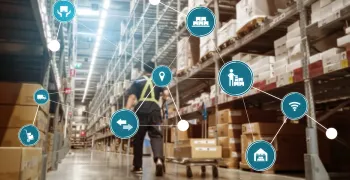Traditional business models were focused on maximizing profits through efficient and effective use of resources to create products. However, these models ended up generating significant amounts of waste while relying on fresh resources to manufacture more products.
Currently, the rate of circularity stands at 7.2% globally – which means that over 92% products are lost to wastage, are lost, or remain unused.
A circular economy helps mitigate these problems by recapturing value at each stage of the product life cycle. By extending product life and exploiting levers such as upcycling, recycling, refurbishment, and reuse, circularity reduces the need for fresh raw materials, while minimizing the material and carbon footprint of products. However, circularity begins with design, as it is the decisions made at this phase that determine 80% of the environmental impact of products.
Modern PLM solutions have proved resilient and capable of supporting complex product life cycles. In their current design, PLMs are already capable of supporting circular product lifecycles. In this article, discover how PLMs can advance sustainability initiatives by supporting the shift from linear to circular product design.
Designing for return: the starting point of circularity
Circular product lifecycles begin at the design table, where engineering teams determine not just how a product will function, but how it will return. A circular lifecycle demands that design accounts for reusability, repairability, disassembly, and material recovery. While traditional CAD or BOM systems cannot handle these requirements in isolation, modern PLM platforms can. By integrating product genealogy with manufacturing and logistics metadata, PLMs transform design from a one-way intent into a multi-loop lifecycle strategy.
With modern PLM systems, engineers can model alternate end-of-life scenarios directly within the design process. Let us understand this in some detail:
- By simulating disassembly paths, assessing material compatibility for recycling, and structuring modular assemblies, engineers can ease component retrieval and the end of the product life cycle.
- Likewise, material passports of products can facilitate future recovery by capturing data on composites, coatings, and joining techniques, which often inhibit recyclability.
- Lifecycle assessments (LCAs), which help designers forecast the environmental impacts of products and their parts, can be embedded into the PLM environment to ensure circularity by design.
Ultimately, circular design isn’t about adding constraints but rethinking the product blueprint for continuity. PLM systems empower this rethinking, enabling organizations to design for permanence rather than disposal.
Let us now take a look at the strategies that enable such outcomes in greater detail below.
- Serialization: enabling traceability from the design phase
Serialization enables each product or component to carry a unique digital identity, assigned at the design stage. This identity can be tracked across its lifecycle, from usage and service to return and reuse. PLM platforms facilitate this traceability by allowing designers to embed serialization logic into product structures and BOMs.
This unlocks downstream value recovery, supports compliance with take-back regulations, and enables granular analysis of material flows – all of which are critical for closing the loop in a circular economy.
- Servitization to embed use-cycle intelligence
Designing for servitization means engineering products for uptime, monitoring, and long-term support rather than one-time sale. PLM systems help develop modular configurations, sensor integrations, and maintenance-friendly architectures that enable products to be delivered as services.
Engineers can simulate usage scenarios and predefine upgrade/upcycle/downcycle paths, ensuring that products and their parts remain in circulation longer. This shift from ownership to access reduces material throughput and aligns product architecture with sustainability goals from the outset.
- Engineering for reverse logistics for efficient recovery
Effective reverse logistics begins at design when engineers must consider how products will be collected, disassembled, and processed after use. To enable this, PLM tools can simulate disassembly sequences, specify reclaimable subcomponents, and map logistics metadata onto design attributes.
By integrating these insights, designers can ensure physical architecture supports efficient end-of-life handling. This eliminates the guesswork in recovery operations and ensures that environmental performance is engineered, not improvised, later in the value chain.
- Modularization and standardization: design for lifecycle flexibility
Modular product design increases reusability, simplifies upgrades, and accelerates repair cycles, which are the key tenets of circularity. To this end, PLM platforms allow engineers to manage standardized component libraries, enforce interface compatibility, and track part reuse across multiple products.
At design time, this promotes lifecycle-aware decision-making, enabling parts to circulate beyond a single use case. Standardization also reduces material complexity, which simplifies recycling processes and lowers emissions at sourcing and end-of-life stages.
Transitioning to circular product design: your starting point
To begin the shift toward circular product design, organizations must treat sustainability as a design-time requirement, not a retrofit. Start by redefining design guidelines to prioritize reuse, modularity, and recovery.
Then, configure your PLM system to support these goals by enabling serialization structures, integrating lifecycle assessment tools, and enriching BOMs with disassembly and material data. In the bigger picture, a well-configured PLM becomes not just a repository, but the strategic foundation for designing products that last, return, and renew.




